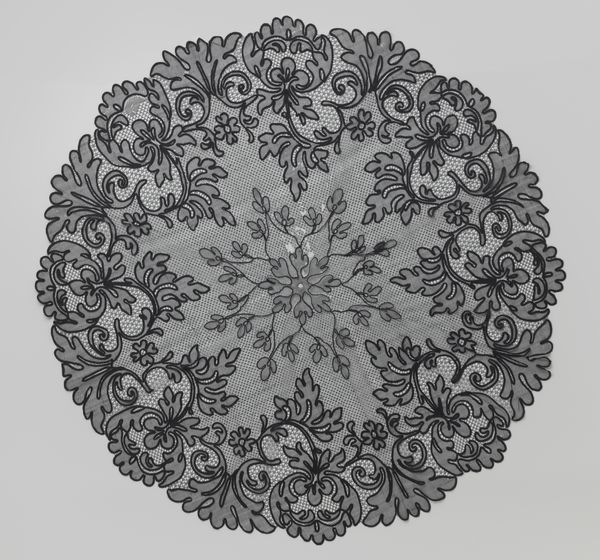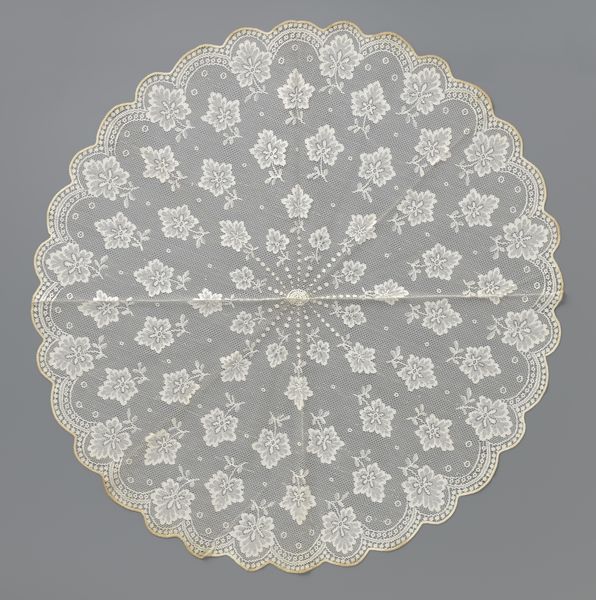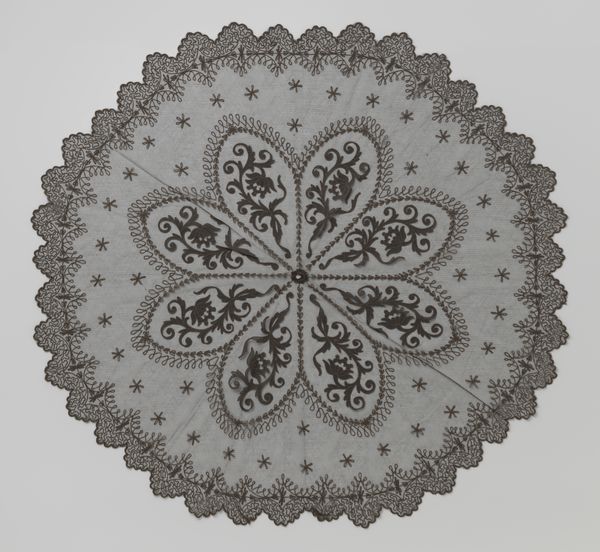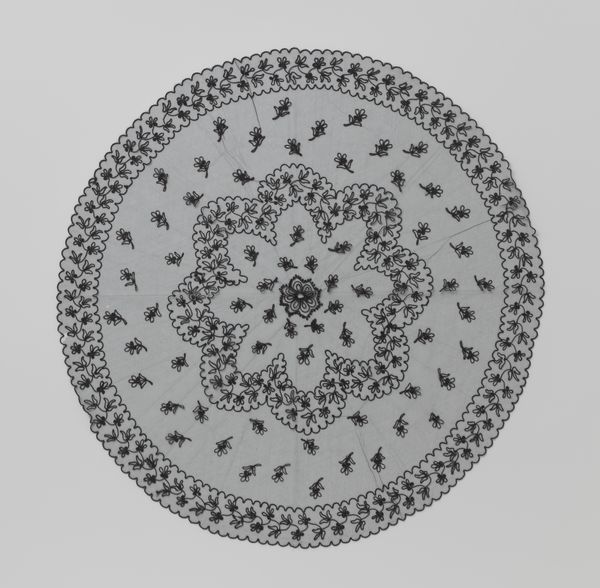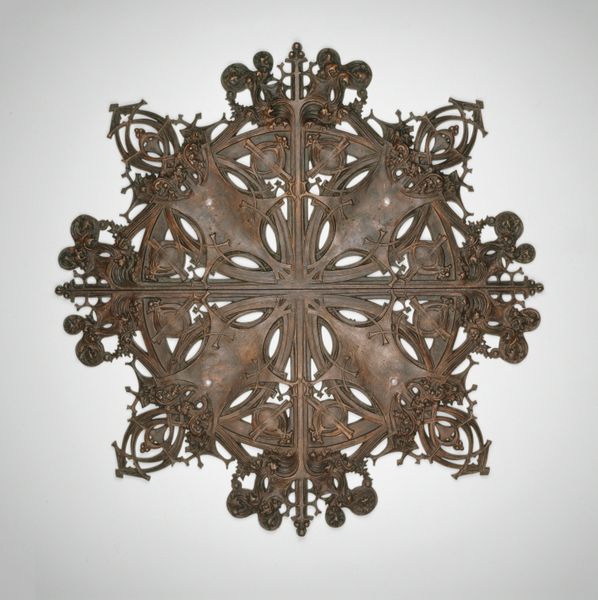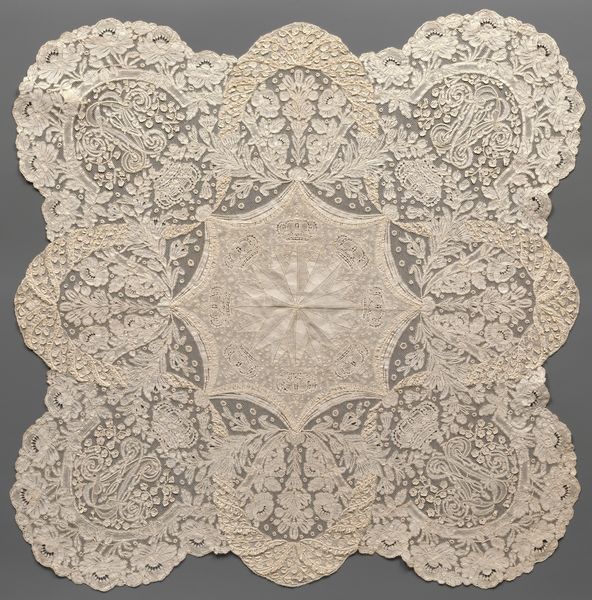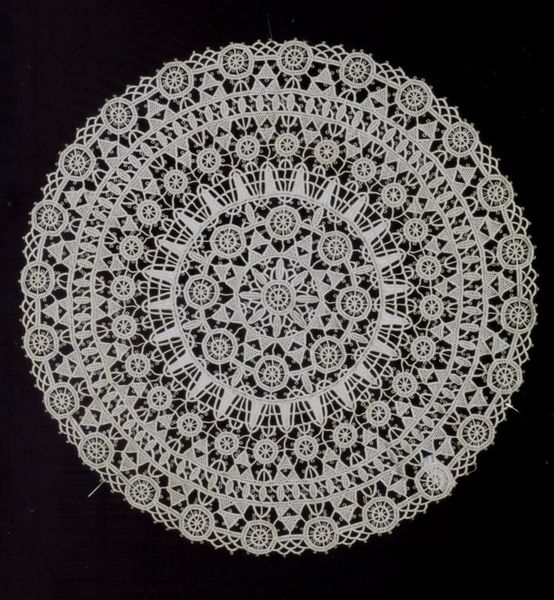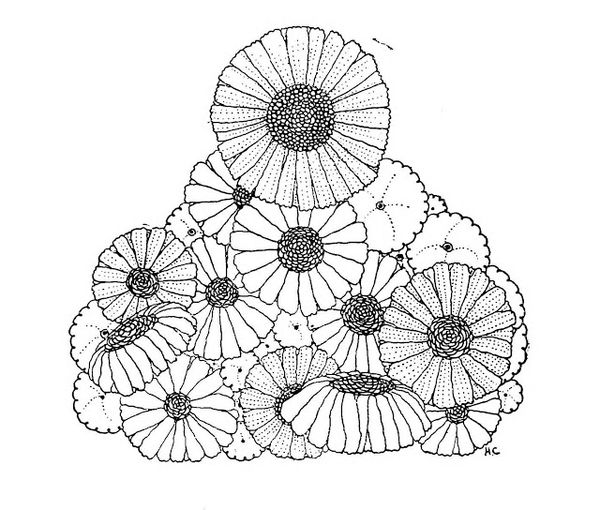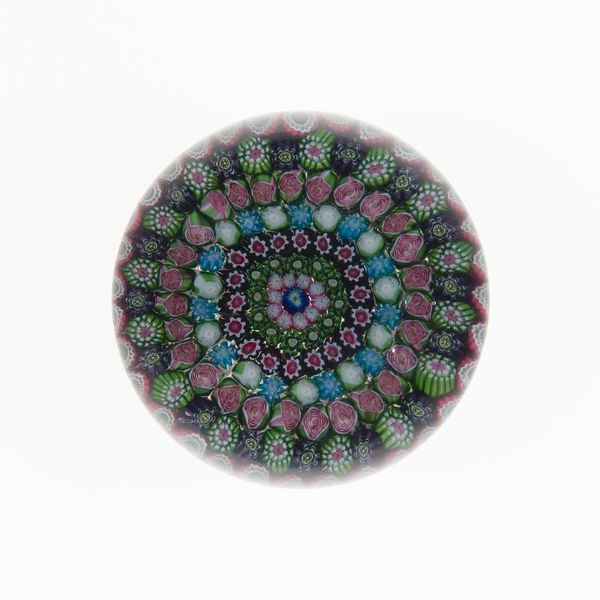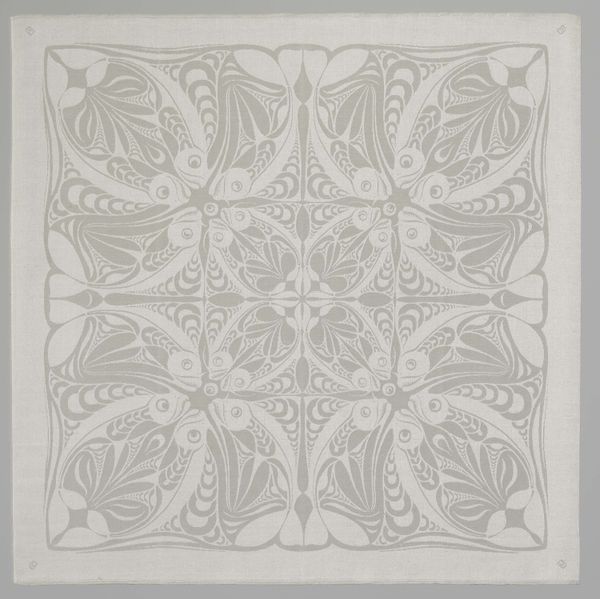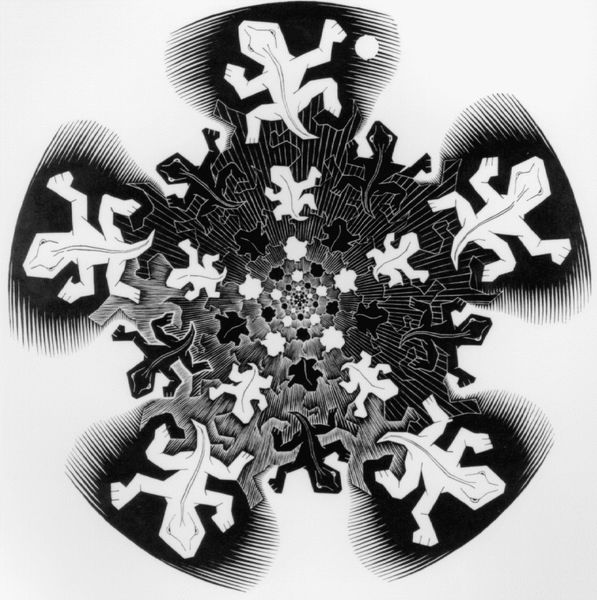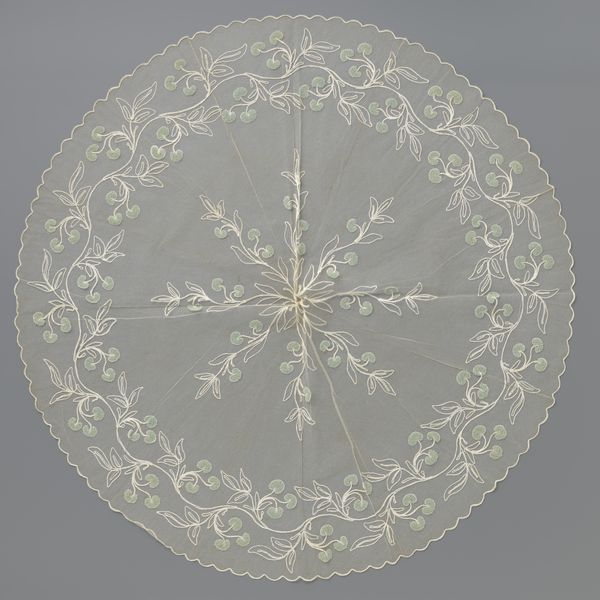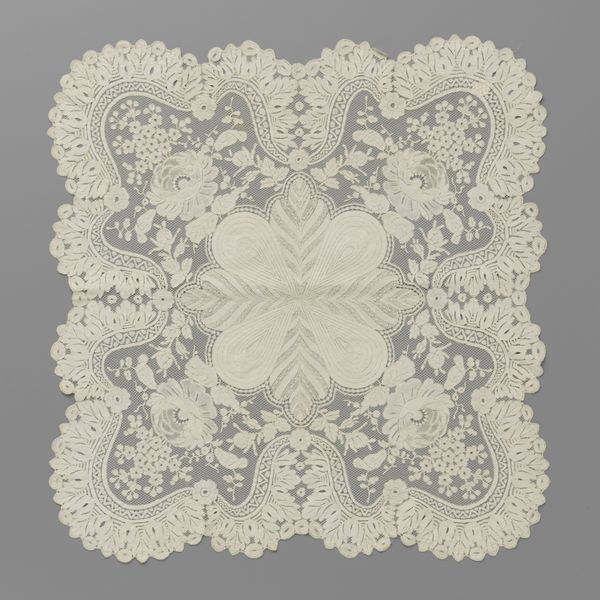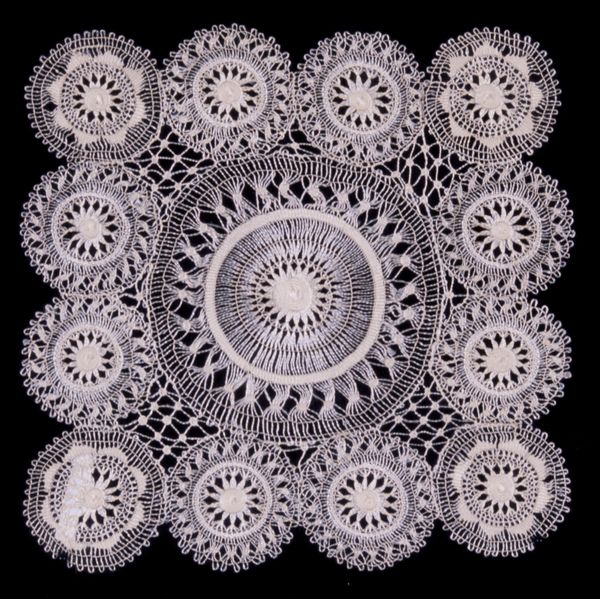
Parasoldek van zwart gaas met acht ingeweven bladtakken met bessen en rand van grote bloemen en bladeren c. 1875 - 1900
0:00
0:00
fibre-art, weaving, textile
#
natural stone pattern
#
fibre-art
#
naturalistic pattern
#
organic
#
weaving
#
textile
#
abstract pattern
#
organic pattern
#
flower pattern
#
repetition of pattern
#
intricate pattern
#
line
#
pattern repetition
#
decorative-art
#
layered pattern
#
combined pattern
Copyright: Rijks Museum: Open Domain
Editor: Here we have a "Parasol Cover of black gauze with eight woven leaf branches with berries and a border of large flowers and leaves," dating from around 1875 to 1900. It’s weaving, a textile object from the Rijksmuseum. What strikes me immediately is its almost mesmerizing level of detail. Curator, how do you see this piece within its historical context? Curator: It's interesting to consider this parasol cover within the context of the late 19th century. Remember that this was a time when sumptuary laws had largely disappeared. A burgeoning middle class now had aspirations, access, and buying power to the previously exclusive markers of aristocracy, and black gauze in particular held specific cultural weight. What might possessing this object have signaled socially to the user and her observers? Editor: Status? An aspiration to that high-society, perhaps? Did the black gauze symbolize mourning during that era? Curator: Precisely! Black fabrics could denote status and, you're right, mourning was heavily codified. However, the bright floral design complicates a straightforward interpretation of mourning. Consider the intense ornamentation and natural motifs. What do they tell us about the intended audience and their desires? Does this relate to ‘high art’ in any way? Editor: I see that! Maybe the flowers are celebrating a transition, a renewal of life instead of mourning? To me, it has decorative charm rather than fine art, it’s applied art meant to be functional. Now I see why it falls into the pattern-and-decoration movement, it does seem like the democratization of owning ornamentations. Curator: Indeed! It reflects a societal shift in access to decorative objects and also, the breaking of hierarchies between art and craft. That makes you consider this differently, doesn’t it? Editor: Definitely! Thank you!
Comments
No comments
Be the first to comment and join the conversation on the ultimate creative platform.
